Named lectures at the World Federation of Neurology (WFN)
by Peter J. Koehler
Foreword by Prof. Wolfgang GrisoldFor several years the WFN has named lectures at the World Federation of Neurology congresses. These lectures express a high esteem of the World Federation for the speaker, and are carefully selected. Prof. Koehler, chair of the WFN Specialty Group on history was asked to find the story behind the persons that the lectures are named after as several of the names belong to prior generations. Behind Fulton, Soriano, Masland, Singhal, Bharucha, and Yahr there are great neurological achievements and history of persons devoted to Neurology. Below you will find Prof. Koehler's description of these eminent neurologists, who continue to shape our named lectures. We hope this contribution will make their input even more memorable. |
Introduction
Giving names to lectures has been a general phenomenon in various fields of society, including the humanities and sciences, since a long time, at least over hundred years. These may be public lectures or lectures presented for members of an association. Through the years, the WFN started a tradition of named lectures and one may wonder, who were the people behind these names. What did they do to become well-known within the neurological community? In this article I will provide biographical sketches of these persons.
1. Victor and Clara Soriano Award Lectures and the Soriano Lecture of the Fulton Society Symposium
With respect to the Soriano lectures, the WFN webpage mentions that "The Fulton Society, Victor and Clara Soriano, and the Soriano Lectureship, are endowed lectures presented at the World Congresses of Neurology".1 So let us first discuss John Farquhar Fulton (1899-1960) and then come back to the Sorianos.
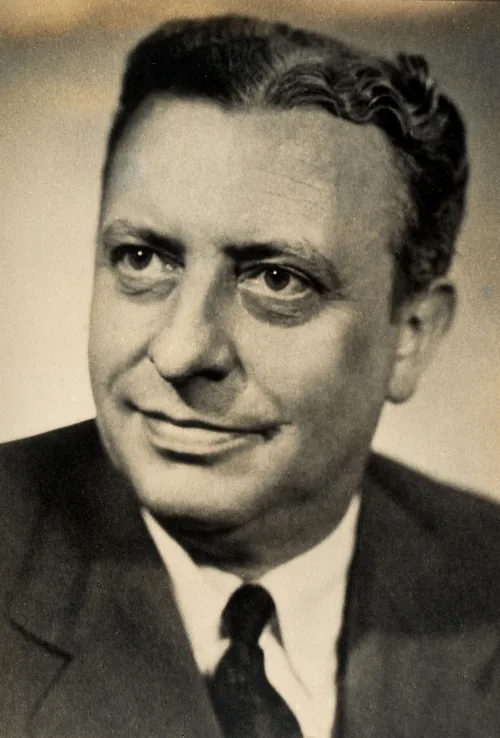 |
John Farquhar Fulton
|
Born the son of ophthalmologist John Farquhar Fulton and Edith Stanley Wheaton in St. Paul (Minnesota)2, John jr. graduated at Harvard with the degree of Bachelor of Science magna cum laude in 1921. He went to Oxford, England, receiving a BA with first class honors in physiology (Oxford). In 1923, he had married Lucia Pickering Wheatland, who was descending from a rich family in Salem, Massachusetts. The marriage remained childless.
John worked in the laboratory of the famous neurophysiologist and Nobel laureate (1932) Charles Scott Sherrington's (1857-1952) and published a 644 page monograph Muscular Contraction and the Reflex Control of Movement in 1926. With a Doctor of Philosophy degree he returned to Harvard, where he was awarded his MD, magna cum laude (1927). He spent a year at the Peter Bent Brigham Hospital in Boston with neurosurgeon Harvey Cushing and they became life-long friends. He went to Sherrington's laboratory for another period and in 1930 he was appointed Sterling Professor at Yale University, the youngest at the University, establishing the first US primate physiology laboratory. His contribution to functional localization in the cerebral cortex is of paramount importance. The combination of his training in physiology under Sherrington and clinical medicine, including his training under Cushing, later resulted in the book Physiology of the Nervous System (1938), which was translated into at least six languages. He attracted neurologists, neurosurgeons, and physiologists from the US as well as from abroad. In cooperation with Johannes G. Dusser de Barenne (1885-1940) he founded the Journal of Neurophysiology (1938). During the war Fulton worked in the field of aviation physiology. His interest in the history of science culminated in one of the greatest collections of the history of medicine in the world at Yale and in a biography of Harvey Cushing (1946). In 1951, Fulton became professor of the history of medicine at the new homonymic department, a decision in which his hard working and health may have played a role. He acquired Cushing's book collection and became editor of Journal of the History of Medicine and Allied Sciences.3,4
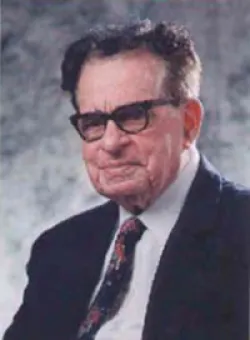 |
Victor Soriano
|
Victor Soriano (1909-2005) was one of the many fellows of Fulton at Yale University. With his wife Clara, he was among the founders of the Fulton Society, perhaps inspired by the Harvey Cushing Society5 and the Osler Society,6 and started the Fulton Society Symposium, including the Soriano Lecture, at the World Congress of Neurology in New Delhi in 1989.7
Born from Jewish parents on the Mediterranean isle Rhodes, when it was still belonging to the Ottoman Empire, but becoming Italian possession in 1912, the family emigrated to Montevideo, Uruguay, when he was 9 months old. Therefore, he considered himself Turkish, Italian, which is not quite correct, and Uruguayan. His father, a respected tailor, founded the Sephardic synagogue of Montevideo. Victor received his MD in 1934 and had been particularly interested in the physician Américo Ricaldoni's (1867-1928) teaching in clinical neurology. Founded in 1926, Soriano became neurologist at the Instituto de Neurología of Montevideo in 1935 and in 1937 a new professor was appointed to succeed Ricaldoni, notably Alejandro Schroeder (1890-1954), who had trained at various German and French hospitals and institutes. Soriano taught neurology and worked at several hospitals and institutes in Montevideo. He was appointed assistant professor of medicine in 1943.
In the meantime he had married Clara also known as Clarita Benzecry in 1939. She supported and encouraged his work in several social and medical activities. When Victor founded the Uruguayan Committee of Friends of the Weizmann Institute of Israel, she organized meetings at their home. Moreover, she hosted weekly scientific, literary, and musical events. Supported by the Rockefeller Foundation, Soriano stayed with Fulton at Yale in 1945 and with Hiram Houston Merritt jr. (1902-1979) at the Montefiori Hospital affiliated to Colombia University in 1947. From 1948 on and accompanied by Clarita, he attended all ANA (American Neurological Association) meetings as well as a number of World Congresses of Neurology (WCN).
The year following Fulton's death, at the Rome meeting of 1961, Soriano and Giuseppe Moruzzi (1910-1986), who had discovered the ARAS (ascending reticular arousing system) and its relation to sleep and waking with Horace W Magoun (1907-1991) in the 1940s, founded the Fulton Society. The Society was commended to organize a special symposium at meetings of the ANA and the WCN. Selected researchers of neuroscience were to present lectures on the advances of research in the nervous system. In 1987 the Sorianos decided to become sponsor of a lectureship at the ANA meetings. The WFN has two types of lectures associated with the Sorianos, including the one mentioned above at the Fulton Society Symposium (Soriano Lecture) and the other named Victor and Clara Soriano Award Lecture.8 The lecturers through the years can be found at Soriano Award Lectures (wfneurology.org) and include Nobel Prize winners Rita Levi-Montalcini (1909-2012), Stanley B. Prusiner (b. 1942), and Bert Sakmann (born 1942). More information on Soriano can be found in World Neurology of May 2018.
2. The Richard L. and Mary Masland Lecture
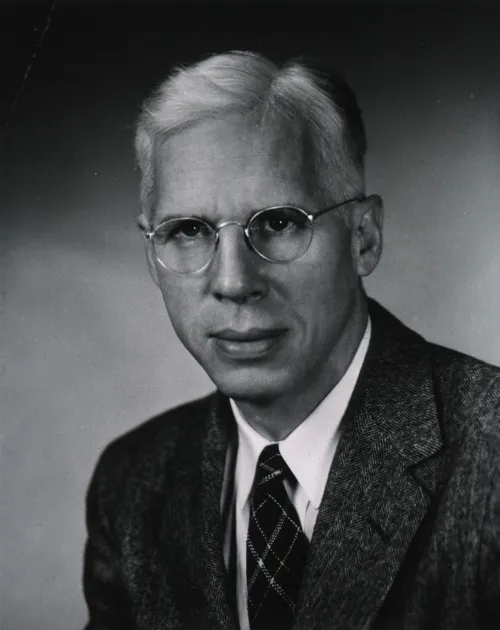 |
Richard L. Masland
|
Richard Lambert Masland (1910-2003) was born the son of a textile executive in Philadelphia. He received his Bachelor's degree from Haverford College and his MD from the University of Pennsylvania. During WWII he was in charge of an altitude flight training for flight surgeons at the School of Aviation Medicine in San Antonio, Texas. In 1947 he certified for neurology and psychiatry. He worked as a neurologist at Bowman Gray School of Medicine in Winston Salem, North Carolina. He had a special interest in the origin of mental retardation and tried to find ways to decrease its prevalence. He joined the National Association for Retarded Children and his research results were published in the book Mental Subnormality: Biological, Psychological and Cultural Factors (1958), of which he was first author. These achievements resulted in his recruitment as assistant director (1957) and director (1959) of the National Institute of Neurologic Diseases and Blindness (NINDB) of the NIH, where he worked until 1968. He led a landmark study on the causes of birth defects, notably the National Collaborative Perinatal Project, a study of pregnancy and child development (1959-1966). It was designed to study risk factors in pregnancy for cerebral palsy and included over 50,000 pregnant women and their children through age seven. It led to over 400 scientific articles and dozens of books and monographs, in which factors like smoking and rubella virus could be associated with mental retardation.
In 1968, Masland became chairman of neurology at the College of Physicians and Surgeons of Columbia University. He directed the Neurologic Service at the Neurological Institute of New York at the Presbyterian Hospital. Neurologist Lewis P. Rowland (1925-2017) said that "The residents were very fond of him. They called him the 'white rabbit' for his prematurely white hair and for his scurrying around"9 Masland served as president of the American Epilepsy Society and of the WFN (1981-1989). In the latter position he was instrumental in changing the newsletter into a scientific journal (Journal of the Neurological Sciences). He was married to Mary Wootton of Englewood, a speech and language pathologist, with whom he had four children.10 He published many articles and received various awards, including the Award of Merit from the National Association for Retarded Children, which was presented to him by President John F. Kennedy in 1963.
3. Dr. Bhim S. Singhal Lecture11
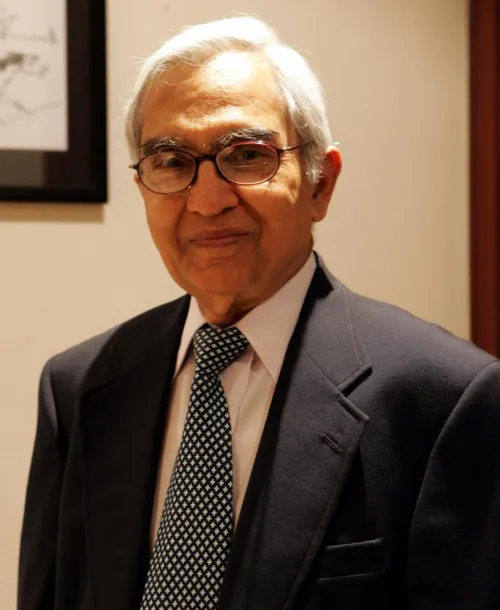 |
Bhim Sen Singhal
|
Born in Mount Abu (in Rajasthan, north-west India) in 1933, Bhimsen Sen Singhal studied medicine, receiving his MD in 1956, and trained for neurology in Mumbai at the Grand Medical College under professor Noshir H. Wadia (1925-2016). He continued his training at the UCL (University College of London) Queen Square Institute of Neurology and became MRCP (Edinburgh, 1960) and MRCP (London, 1961). Upon his return to India in 1962, he worked at the department of neurology at Grant Medical College and Sir. J. J. Group of Hospitals, where he became professor and chairman of the department. He was also active at the Bombay Hospital Institute of Medical Sciences in Mumbai. In 1991 he retired from the Grant Medical College, but continued his activities at the Bombay Hospital Institute. He trained many neurologists and published numerous articles and book chapters. He was interested in particular in multiple sclerosis,12 myasthenia gravis,13 and Parkinson's disease. Singhal and co-workers described the entity of megalencephalic leukodystrophy (1996), especially prevalent in the Agarwal (anglicized term for Agrawal) community.14 In 2004, with international collaboration, he was one of the authors of a report in which the identification its gene defect was described.15
Singhal served for many national and international organizations, including the Neurological Society of India, of which he was president in 1986, and the WFN as regional director. He was honored with a number prestigious national awards, including the Padma Shri. This is awarded annually on India's Republic Day and is the fourth-highest civilian award of the country. The award was not only a recognition for his clinical and academic work, but also his efforts through non-profit national foundations. An example of the latter was his initiative to establish the Neurology Foundation in 1998, to improve knowledge and provide assistance in patient care. This includes financial assistance for medical treatment, rehabilitation therapies for children, and adults from low socio-economic areas, community outreach, and support for professional organizations such as the Multiple Sclerosis Society of India and the Indian Epilepsy Association. The foundation also started biennial Neurology Update conferences that became very popular. In 2001, Singhal founded the Parkinson's Disease and Movement Disorder Society (PDMDS), an all-India "Registered Charity Society". This is a nonprofit charitable organization that supports patients and their caregivers and is also active in the rehabilitation of patients. He is honored by two lectureships, notably one at the WFN and the other at the Indian Academy of Neurology
Dr. Singhal is married to dr. Asha Singhal, who is an obstetrician and gynecologist. Like her husband she devoted her life to underprivileged people. They have a son, who is a stroke-neurologist at the Massachusetts General Hospital and a daughter, who is a professor of medicine (hematology and oncology) in Chicago.
4. Bharucha Lecture 16,17,18
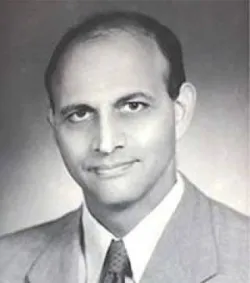 |
Eddie Bharucha
|
Eddie Phiroz Bharucha (1916-2017) was born in a privileged family. His father Phiroz C. Bharucha (1882-1952) was a physician in Bombay (the present Mumbai) and his mother Bachha descended from a business family in Karachi. Eddie's mother died when he was two years old and he was educated mainly by an English governess. He studied medicine in Bombay and London, after which he became Honorary Physician in Medicine at the King Edward Memorial and Seth G S Medical College (KEM) Hospital in Bombay (1945). In the 1949-1952 period, he trained for neurology at the National Hospital for Nervous Diseases (Queen Square) in London that had been amalgamated with the Maida Vale Hospital in 1948. In this period he also spent some time at Colombia University in New York (with Houston H. Merritt jr.) and Boston City Hospital (with Derek Denny Brown (1901-1981)). When he returned to India and the KEM Hospital, he was the first neurologist in Bombay19 and in cooperation with neurosurgeon Ramchandra G. Ginde (1912-1974), who trained with Wilder Penfield (1891-1976) in Montreal, started a department of neurology and neurosurgery, with twelve beds each (1953). Bharuch also worked at the Bombay Hospital, which is a large private hospital that became a teaching hospital.
Eddie married with pediatrician dr. Piloo (Kohiyar) Bharucha in 1947 and together they practiced multidisciplinary care in pediatric neurology.20 They treated children with poliomyelitis and cerebral palsy at the Children's Orthopedic Hospital. With respect to his research and publications, he was active in stroke, infections, nutritional and toxic (for instance lathyrism) disorders, and epilepsy. He was a member of the editorial board of Vinken's & Bruyn's Handbook of Clinical Neurology from 1973. He was considered an empathic physician with an importance sense for social responsibility for the underprivileged. He invested personal financial means for the purchase of an EEG machine and the import of D-penicillamine (to treat Wilson's disease). Piloo and Eddie had three sons.
Eddie Bharucha held several positions in India and received the Dhanvantari Award for his outstanding contributions to medical sciences (1991). He was elected President of the Neurological Society of India (1956),21 vice-president of the WFN (1969-1973), and president of the World Congress of Neurology in New Delhi, 1989. He was honorary member of several organizations, including the ANA. During the last twenty years of his life, he suffered from severe visual handicap. In anticipation of his decreasing vision, he read journals texts onto a Dictaphone so that he could later listen to the contents. With respect to his character, one of his sons, the neurologist Nadir Bharucha wrote "He did not seek positions of power or prestige, was unconcerned about material remuneration, and perennially radiated good cheer, kindness, and caring".16 The Bharucha family, students, and friends established the Eddie & Piloo Bharucha Fund for lectures to be held during World Congresses of Neurology.
5. The Melvin D. Yahr Lecture 22,23,24
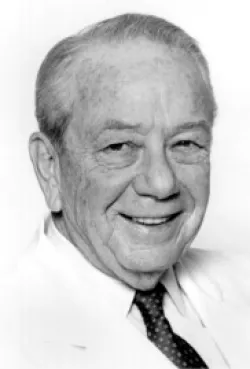 |
Melvin D. Yahr
|
Melvin D. Yahr (1917-2004) was born in New York City as the youngest of six children. His parents were orthodox Jewish immigrants from Austria-Hungary. His father was a baker. Melvin studied medicine, receiving his MD from New York University, College of Medicine in 1943. Interrupted by military services, he specialized for neuropsychiatry and neurology at various New York hospitals, during the following next six years. He married Felice Yahr, with whom he had four daughters. He worked at the College of Physicians and Surgeons, Columbia University, where he became H. Houston Merritt professor of neurology (1973) and at Mount Sinai School of Medicine (City University of New York), where he was professor and chair (1973-1992). He created the first US multidisciplinary center for research in Parkinson's disease and related disorders, which he later took to Mount Sinai. He played a role in the training of over hundred neurologists. His name and that of the Canadian neurologist Margaret May Hoehn (1930-2005), who was associate professor at Columbia University at the time, were eponymized by the Hoehn and Yahr scale for determining the severity of Parkinson's disease.25 The article was referred to in the following way "Their work established that the average age of onset of PD [Parkinson's disease] was in the 6th decade (ie, between ages 50–59 years), described a broad spectrum of rates of progression, established that PD was associated with an increased mortality rate, and concluded that there were no treatments that affected life expectancy".23 Yahr was (co-)author of over three-hundred articles, including the first double-blind levodopa study (1969).26 He served at a number of US Advisory Committees and held positions at various neurological organizations and congresses, including the ANA (president) and the WFN. From 1963, Parkinson's disease became his main research subject. He took the initiative to establish the Research Committee on Extrapyramidal Disorders of the WFN (1959) and chaired the Research Group (1972-2001). It transformed into the International Association of Parkinsonism and Related Disorders.27 He was member of the Editorial Boards of several journals, including the Archives of Neurology (now known as JAMA Neurology). He became honorary member of several national neurological societies. In one of the obituaries he was described as follows: "His, with very few sentences precisely described situations, analyses and thoughts, which he performed in a dark, sometimes rough appearing lingo and often with a mischievous but wise facial expression, eyes only a wee bit open, will be unforgettable to everyone who got acquainted to Melvin Yahr".24
Conclusion
The persons described above were hard working neurologists, with the exception of Fulton, who became experimental neurophysiologist and historian of medicine. Several if not all of their wives, some of whom being physicians themselves, contributed to their success. Whereas the Soriano, Singhal, and Bharucha Lectures were founded by the respective families (and friends), the Richard L. and Mary Masland Lecture and the Melvin D. Yahr Lecture were sponsored by the World Neurology Foundation (USA based) that was created in 1999.28 Another difference perhaps is that next to scientific, social efforts may have been a more important part of the careers and subsequent initiatives of Soriano, Singhal, and Bharucha. In contrast, scientific achievements may have been the more important motivation for the founding of the Masland and Yahr Lectures.
References
- See Soriano Award Lectures (wfneurology.org); accessed December 17th, 2022
- Gariepy TP. John Farquhar Fulton and the History of Science Society. ⧉ Isis 1999;90:S7-27.
- Davey LM. Obituary. John Farquhar Fulton, 1899-1960. ⧉ J Neurosurg. 1960;17:1119-23.
- Igual MM. John F. Fulton (1899-1960): neurophysiologist, bibliophile, and historian. His relationship with Spain. ⧉ Neurosci Hist 2019;7:62-76.
- It became American Association of Neurological Surgeons (AANS) in 1967; see Introduction (aans.org) ⧉ ; accessed December 17th, 2022.
- In fact there are several Osler Societies, including the American Osler Society dedicated to the history of medicine and the William Osler Society of Australia & New Zealand.
- For a list of lecturers since the foundation see Soriano Award Lectures (wfneurology.org)
- An important source for the information in this biographical sketch is Victor Soriano (worldneurologyonline.com) ⧉
- Oransky I. Obituary: Richard L Masland. ⧉ Lancet 2004;363:663.
- Pedley TA, Rowland LP. In Memoriam: Richard Lambert Masland, MD (1910-2003). ⧉ Neurology 2004;62:1056-7.
- This article is partly based on: Meshram C. Padma Shri for Dr. Bhimsen Singhal. ⧉ World Neurology 2022, May 15th.
- See for instance Singhal BS, Advani H. Multiple sclerosis in India: An overview. ⧉ Ann Indian Acad Neurol. 2015 Sep;18(Suppl 1):S2-5.
- Singhal BS, Bhatia NS, Umesh T, Menon S. Myasthenia gravis: a study from India. ⧉ Neurol India. 2008;56:352-5.
- Singhal BS, Gursahani RD, Udani VP, Biniwale AA. Megalencephalic leukodystrophy in an Asian Indian ethnic group. ⧉ Pediatr Neurol. 1996;14:291-6.
- Gorospe JR, Singhal BS, Kainu T, Wu F, Stephan D, Trent J, Hoffman EP, Naidu S. Indian Agarwal megalencephalic leukodystrophy with cysts is caused by a common MLC1 mutation. ⧉ Neurology. 2004;62:878-82.
- Bharucha N. Eddie Phiroz Bharucha. ⧉ World Neurology 2018, May 14th.
- Shah P, Seshia S. Dr. Eddie P. Bharucha (December 28, 1916–December 14, 2017). ⧉ Ann Indian Acad Neurol 2018;21:91-2.
- Shah PU, Saxena VS. Dr. Eddie Phiroze Bharucha (December 28, 1916–December 14, 2017). ⧉ Int J Epilepsy 2018;5:53-5.
- Poser CM, Crawford Poser J. Neurology in the developing world. ⧉ Brain 2006;129:1624-9.
- Bharucha, 2018.
- Culebras A. Named Lectures at the World Congress of Neurology. ⧉Neurology 2005;65:31-2a.
- Charatan F. Melvin Yahr. Neurologist who revolutionised the treatment of Parkinson's disease. ⧉ BMJ 2004;328:290.
- Oransky I. Melvin D. Yarh. ⧉ Lancet 2004;363:903.
- Riederer PF, Hirsch E, Youdim MB, Calne DB. A tribute for Prof. Dr. Melvin D. Yahr, M.D. (1917-2004) ⧉. J Neural Transm (Vienna). 2004;111:1205-8.
- Hoehn MM, Yahr MD. Parkinsonism: onset, progression and mortality. ⧉ Neurology 1967;17:427-42.
- Yahr MD, Duvoisin RC, Schear MJ, Barrett RE, Hoehn MM. Treatment of parkinsonism with levodopa. ⧉ Arch Neurol 1969;21:343-54.
- See About IAPRD - IAPRD 2023 (iaprd-world-congress.com) ⧉ ; accessed December 26th, 2022.
- The mission and other information on the World Neurology Foundation can be found at Our Mission | World Neurology Foundation ⧉ ; accessed December 26th, 2022.
WFN Brain Health Lecture
By Prof. Wolfgang Grisold
The concept of brain health has been actively promoted by the World Federation of Neurology (WFN) since 2020. This initiative represents a landmark in the global advancement of brain health, now embraced by numerous national and international societies and organizations. Brain health refers to maintaining a healthy brain throughout life—from conception to old age—ensuring the proper functioning of the brain, mind, and neurological system.
The WFN has adopted the concept of brain health as a central theme for a series of sessions at the World Congress of Neurology aimed at promoting neurology and addressing regional neurological challenges worldwide. This initiative underscores the WFN’s commitment to advocating for individuals with neurological diseases and those with lived experiences. Active collaboration with member societies, regional organizations, the World Health Organization (WHO), and the United Nations remains essential to advancing this mission.
The lecture is intended as a plenary lecture serving to underline the importance of brain health for the WFN and and its pivotal role in neurology.







